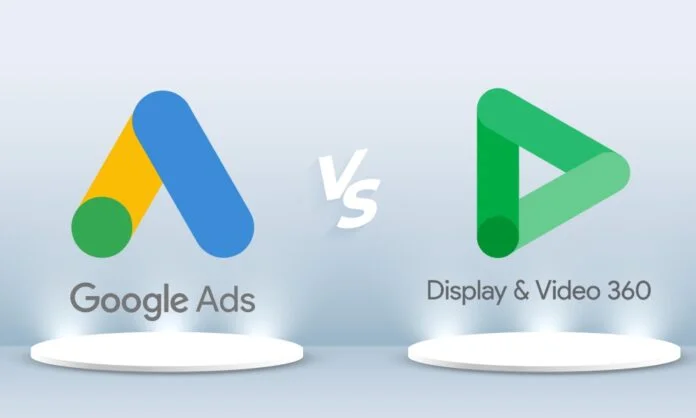Digital advertising has been here for a long time. Marketers are striving to make their campaigns a hit! But how does it all go?
Yes! Google Ads, previously known as AdWords, is used for search, display, and video ads. But do you have any idea about another superpower that could take your campaigns to the next level? It is none other than DV360.
Here’s an ultimate rundown of the key differences between Google Ads and DV360! Well, both are powerhouses in advertising, so the competition is at its peak.
A Look into Google Ads
Google Ads, previously known as AdWords, is a pay-per-click advertising platform by Google that’s user-friendly. It is popular amongst advertisers in creating ads of different types including search ads, display ads, banner ads, video ads, and more. In the same way, advertisers can reach the intended audience on YouTube, Google Search, and other display network websites that you visit. The ultimate goal is to generate traffic and in turn, leads.
About DV360 (Double & Video 360)
DV360, formerly known as DoubleClick Bid Manager, is Google’s enterprise-level Demand Side Platform (DSP) used for programmatic media buying. DV360, display and video360 allows advertisers to buy display, video, audio, and native ads on offer from many different ad exchanges, and not just through Google Products.
DV360 is a platform meant for large businesses and agencies to utilize an extensive variety of targeting, creative, and analytics options to create cross-channel advertising campaigns. DV360 delivers added control, transparency, and efficiency in media planning and buying for initial and ongoing campaigns.
Differences to Know: Google Ads vs DV360
1] Advertisement Placement & Inventory Access
The point is, that Google Ads displays its advertisements only across its ecosystem such as Search, Gmail, YouTube, and more. Moreover, the scenario with DV360 (Display and Video Ads) is different. It offers access to larger and larger & higher-quality premium inventory, including third-party programmatic ad exchanges, connected TV (CTV), or premium high-traffic websites.
This means a broader-reaching depth of ad placement inventory, giving advertisers flexibility to where their advertisements may appear.
2] Audience Targeting Capabilities
Google Ads targets campaigns using targeted specifications such as demographics, keywords, location, and lightly interest based. DV360 goes above and beyond providing advertisers with fine-grain precision targeting methodologies. It does it using first-party and third-party behavioral data and targeting methodology to reach those highly specified audiences available to advertisers.
Plus, allows for custom audience creation or segmentation, giving marketers the ability and control to create and follow precise audiences proficiently.
3] Creative Flexibility
Google ads are limited in terms of customization, even though they support a range of advertisement formats such as formats (text, display, shopping, & video).
On the other hand, DV360 offers a range of creative options that enable creative and interactive display advertisements as well as an ability to implement sequential storytelling, guiding prospective brands through a predetermined story arc across multiple exposures of rising frequency.
4] Reporting and Analytics
When it comes to Reporting and Analytics, Google Ads performs metrics such as clicks, impressions, CTR, and conversion rate. DV360 offers enhanced reporting modules, such as custom attribution models and cross-device tracking, along with integration with tools such as Campaign Manager 360 and Google Analytics 360.
5] Budget Flexibility
Google is ideal for those with a lower budget, alongside the need for only limited bidding options and low entry levels. DV360 is intended for advertisers with larger media budgets that require extensive reach, very sophisticated capabilities, and premium placements/ inventory.
6] Brand Awareness and Reach
DV360 is a superior choice for initiatives that aim to increase brand recognition. The access available through connected TV, exclusive video streaming platforms, and prime publishers is guaranteed to assure visibility, brand retention, and brand recall.
Google Ads can facilitate awareness to some extent but lacks the scale, premium inventory, and brand guarantees that DV360 will deliver.
7] Storytelling Features
DV360 is great at telling brand stories with a combination of display and video. It offers sequential messaging, allowing advertisers to develop a story or narrative and take viewers or consumers on a journey through their brand story.
Google Ads cannot tell a story in this way, making it more limited to road mapping or sequential campaigns.
Google Ads vs DV360 Ads: Key Differences Showdown
Google Ads vs DV360: Wrapping it Up
Google Ads has always been a go-to choice for advertisers looking for a budget-friendly platform to reach users and promote their business online. Moreover, if your campaign budget is high and needs more reach, target, or optimizations, DV360 is the ideal platform to consider.
In the end, which one to go with typically depends on your budget! For more information on such blog topics, check our website today.


